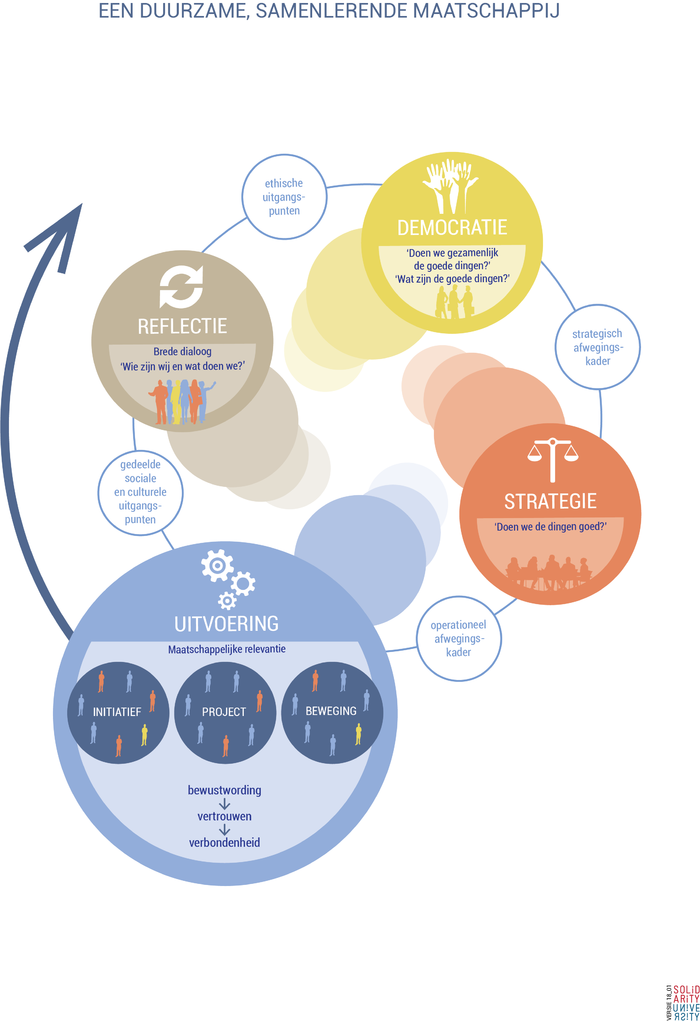Social Innovation Process
The Social Theory (ST) provides a social innovation framework centered around a Social Innovation (SI) process. The SI process is geared towards discovering a shared meaning on the basis of mutual understanding. It is an iterative process that continuously reassesses lessons learned from concrete activities. So, shared meaning is not carved in stone. It is part of our tradition, which evolves as result of changing circumstances that requires to reconsider our relations with each other as well as our relations with the outside world, including (self-induced) environmental changes and advancements in science and technology.
The SI process is shown below. It is comprised of four main processes: implementation, reflection, democracy and strategy. Together they transform a given input to some output. This corresponds to the classical conception of systems thinking in which a system performs a purposeful input-output transformation. Whereas a process in a more traditional sense often has a starting and ending point, the SI process is iterative and reflexive of nature and therefor never really stops. It might temporarily be on hold but as movement is inevitable, the process will, one moment or another, continue to move. And even though visualizing a process implies a certain level of succession (A is followed by B is followed by C and so on..) the SI process does not always follow a set pattern. This means one can move from one process to another in a perhaps more natural order but can also move back or forth to other stages depending on the situation one is in. More particularly, the four processes can run concurrently.
The process as will be described can be applied within different settings. Although the terms democracy and strategy, might imply that this process is mainly applicable in settings concerning local or national government institutions this is not the case. It is important to note that ST is based on democratic principles. ST can be applied within every context in which these democratic principles hold, or at least a context in which different voices are heard and valued. Government institutions clearly follow these principles and ST will be of great use understanding and bringing about change within those settings. However, small, medium or large organizations can also make use of ST. The way in which the democratic and strategic processes are organized within those settings may differ, but the basic principles are the same.
In the next paragraphs the different processes will be discussed but while we will start with the implementation process, this does not necessarily always have to be the starting point.

